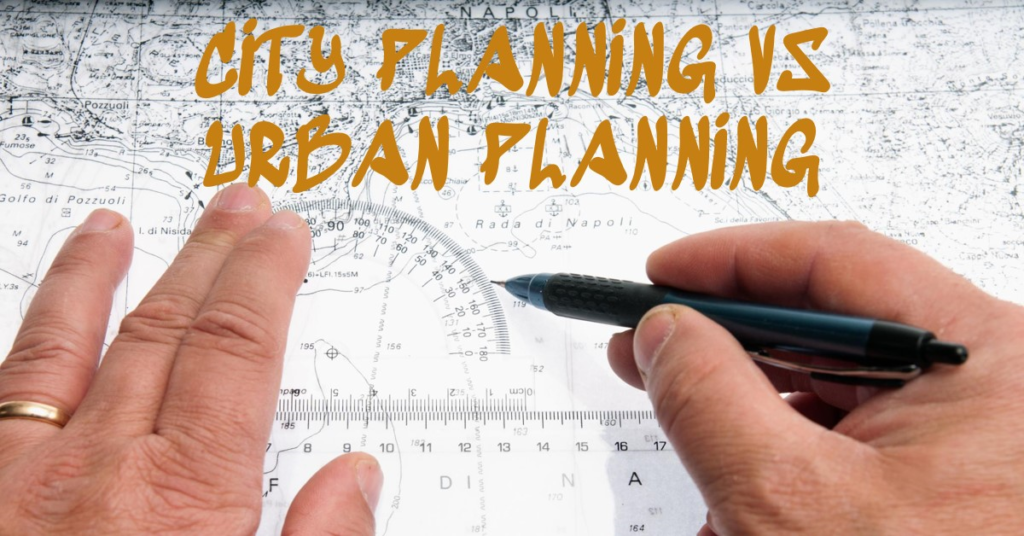
Table of Contents
- Introduction:
- Defining City Planning: Focus on the Microcosm
- Urban Planning: The Broader Perspective
- Scope and Scale: Micro vs. Macro
- Zoning and Land Use: Tailoring vs. Integrating
- Infrastructure Development: Local vs. Regional
- Economic Development: Immediate vs. Strategic
- Environmental Considerations: Local Impact vs. Regional Sustainability
- Community Engagement: Local Voices vs. Regional Consensus
- Governance and Policy: Municipal vs. Regional Coordination
- Conclusion: Harmonizing the Micro and Macro Perspectives
Introduction:
City planning and urban planning are two terms often used interchangeably, yet they encapsulate distinct processes and scopes within the realm of designing and organizing our built environments. Understanding their differences is crucial for professionals and stakeholders aiming to create harmonious and functional spaces. In this blog post, we will delve into the nuances of city planning and urban planning, highlighting their unique characteristics and interconnections.
Defining City Planning: Focus on the Microcosm
City planning, often referred to as municipal planning, primarily concentrates on the development and organization of individual cities or towns. This process involves detailed attention to zoning, land use, infrastructure, and the layout of neighborhoods.
City planners are tasked with addressing immediate concerns such as traffic congestion, public transportation routes, and the placement of parks and recreational facilities. They work within the boundaries of a specific city, tailoring their plans to meet the unique needs and challenges of the local population.
Urban Planning: The Broader Perspective
Urban planning, in contrast, takes a more expansive view, encompassing entire metropolitan areas, regions, or even nations. It addresses the broader socio-economic and environmental issues that transcend individual city limits, aiming to create cohesive and sustainable urban regions.
Urban planners focus on large-scale infrastructure projects, regional transportation systems, and economic development strategies. Their work often involves coordinating with multiple municipalities and governmental bodies to ensure a unified approach to urban growth and development.
Scope and Scale: Micro vs. Macro
One of the primary distinctions between city planning and urban planning lies in their scope and scale. City planning operates at the micro level, dealing with the intricate details of a single urban area. This includes managing local zoning laws, building codes, and municipal services.
Urban planning, on the other hand, functions at the macro level, considering the interconnections between various cities and towns within a region. It involves strategic planning for regional growth, addressing issues like housing affordability, environmental sustainability, and economic diversification across a wider area.
Zoning and Land Use: Tailoring vs. Integrating
City planners often focus on zoning and land use within a specific city, ensuring that residential, commercial, and industrial areas are appropriately designated and regulated. This involves detailed analysis of population density, traffic patterns, and community needs.
Urban planners must integrate land use planning across multiple jurisdictions, balancing the needs of various communities while promoting regional coherence. They must consider how different zoning decisions in one city might impact neighboring areas, requiring a more holistic approach.
Infrastructure Development: Local vs. Regional
Infrastructure development is another area where city planning and urban planning diverge. City planners concentrate on the local infrastructure needs of a single municipality, such as roads, sewage systems, and public transportation networks.
Urban planners, in contrast, work on regional infrastructure projects that span multiple cities and towns. This includes developing integrated transportation systems, regional utility networks, and large-scale environmental projects that require coordination across various jurisdictions.
Economic Development: Immediate vs. Strategic
City planning often involves immediate economic development initiatives aimed at attracting businesses and fostering local job creation. Planners work to create vibrant downtown areas, support small businesses, and develop commercial zones that meet the needs of the local economy.
Urban planning focuses on long-term strategic economic development, considering regional trends and global market forces. Urban planners devise strategies to diversify the regional economy, attract large-scale investments, and ensure sustainable economic growth that benefits multiple communities.


Environmental Considerations: Local Impact vs. Regional Sustainability
City planners address environmental concerns at the local level, implementing green spaces, waste management systems, and policies to reduce urban heat islands. Their efforts aim to improve the quality of life for residents within a specific city.
Urban planners take a broader view, addressing environmental sustainability at the regional level. This involves planning for large-scale conservation areas, regional air quality management, and climate resilience strategies that require cooperation among multiple municipalities.
Community Engagement: Local Voices vs. Regional Consensus
City planning heavily relies on local community engagement, seeking input from residents, businesses, and local organizations to shape development plans. Public hearings, community meetings, and surveys are common methods to gather feedback and ensure that local voices are heard.
Urban planning, while also valuing community input, must balance the interests of a broader range of stakeholders. Planners work to build regional consensus, often navigating complex political landscapes and diverse community interests to develop plans that serve the greater good.
Governance and Policy: Municipal vs. Regional Coordination
Governance and policy-making in city planning are typically handled by municipal governments and local authorities. City planners work within the framework of local regulations and policies, ensuring compliance with city-specific laws and ordinances.
Urban planning requires coordination among multiple levels of government, including regional planning agencies, state governments, and sometimes federal authorities. Urban planners must navigate a more complex regulatory environment, ensuring that regional plans align with overarching policy goals and legal requirements.
Conclusion: Harmonizing the Micro and Macro Perspectives
While city planning and urban planning each have distinct roles and focuses, they are inherently interconnected. Successful urban development requires harmonizing the micro-level details of city planning with the macro-level strategies of urban planning. By understanding and appreciating the unique contributions of each discipline, planners can work together to create thriving, sustainable, and resilient urban environments.
In conclusion, recognizing the differences between city planning and urban planning allows for a more nuanced approach to addressing the diverse challenges of urbanization. Both disciplines play vital roles in shaping our cities and regions, and their collaboration is essential for fostering cohesive and well-balanced urban growth.



